Western Hemisphere
The Western Hemisphere is a geographical term[1][2] for the half of Earth which lies west of the prime meridian (which crosses Greenwich, London, United Kingdom) and east of the antimeridian. The other half is called the Eastern Hemisphere. In geopolitical terms, the context in which the term is most often used, the Encyclopedia Britannica defines it as "North and South America and the surrounding waters. Longitudes 20°W and 160°E are often considered its boundaries."[3] It may be used in a cultural or geopolitical sense as a synonym for the "New World".
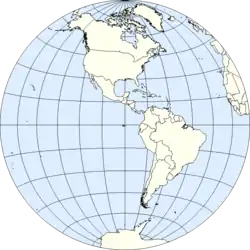
Toponomy
As an example of totum pro parte, the term Western Hemisphere is widely used by some, such as the United States government, to refer to the Americas.[4][5][6][7][8][9][10][11]
Geography
The Western Hemisphere consists of the Americas, excluding some of the Aleutian Islands to the southwest of the Alaskan mainland; the westernmost portion of Europe, both mainland and islands; the westernmost portion of Africa, both mainland and islands; the extreme eastern tip of the Siberian mainland and islands (Russian Asia); numerous territories in Oceania; and a large portion of Antarctica.
The center of the Western Hemisphere is located in the Pacific Ocean at the intersection of the 90th meridian west and the Equator, among the Galápagos Islands. The nearest land is Genovesa Island at 0°19′00″N 89°57′00″W.
The highest mountain in the Western Hemisphere is Aconcagua in the Andes of Argentina at 6,960.8 metres (22,837 ft).[12]
The tallest human-occupiable building or tower in the Western Hemisphere is the CN Tower, which is located in Toronto, Canada at 43°38′33.22″N 79°23′13.41″W.
Proposed revision of hemispheric borders
In an attempt to define the Western Hemisphere as the parts of the world which are not part of the Old World, there also exist projections which use the 20th meridian west and the diametrically opposed 160th meridian east to define the hemisphere.[1] This projection excludes the European and African mainlands and a small portion of northeast Greenland, but includes more of eastern Russia and Oceania.
Sovereign states in both hemispheres
Below is a list of the sovereign states in both the Western and Eastern Hemispheres on the IERS Reference Meridian, in order from north to south:
 Denmark, due to passing close to Greenland and to the Faroe Islands. Denmark proper lies entirely within the Eastern Hemisphere.
Denmark, due to passing close to Greenland and to the Faroe Islands. Denmark proper lies entirely within the Eastern Hemisphere. Norway, due to passing close to Jan Mayen. Mainland Norway, Svalbard and Bouvet Island lie entirely within the Eastern Hemisphere.
Norway, due to passing close to Jan Mayen. Mainland Norway, Svalbard and Bouvet Island lie entirely within the Eastern Hemisphere. United Kingdom, passing through Greenwich, London. Most of the country lies within the Western Hemisphere.
United Kingdom, passing through Greenwich, London. Most of the country lies within the Western Hemisphere. France, passing through Puynormand (Gironde.) About 1/3 of the country, including cities like Nantes or Bordeaux, as well as the overseas regions of Guadeloupe, Martinique, and French Guiana lie within the Western Hemisphere.
France, passing through Puynormand (Gironde.) About 1/3 of the country, including cities like Nantes or Bordeaux, as well as the overseas regions of Guadeloupe, Martinique, and French Guiana lie within the Western Hemisphere. Spain, passing through Castelló de la Plana (Valencian Community). Most of Spain, including the capital Madrid, the Canary Islands and the southern half of its Mediterranean territorial waters, lies within the Western Hemisphere. Spanish, Moroccan and Algerian Mediterranean waters are the only part of the Mediterranean Sea located in the Western Hemisphere.
Spain, passing through Castelló de la Plana (Valencian Community). Most of Spain, including the capital Madrid, the Canary Islands and the southern half of its Mediterranean territorial waters, lies within the Western Hemisphere. Spanish, Moroccan and Algerian Mediterranean waters are the only part of the Mediterranean Sea located in the Western Hemisphere. Algeria, passing through Stidia. About 1/4 of the country including Oran, Algeria's second largest city, lies within the Western Hemisphere.
Algeria, passing through Stidia. About 1/4 of the country including Oran, Algeria's second largest city, lies within the Western Hemisphere.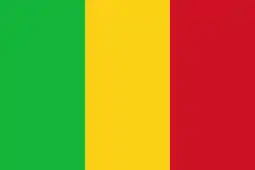 Mali, passing through the municipal area of Gao. Most of Mali, including the capital Bamako, lies within the Western Hemisphere.
Mali, passing through the municipal area of Gao. Most of Mali, including the capital Bamako, lies within the Western Hemisphere. Burkina Faso, passing through Lalgaye. Most of the country, including the capital Ouagadougou, lies within the Western Hemisphere.
Burkina Faso, passing through Lalgaye. Most of the country, including the capital Ouagadougou, lies within the Western Hemisphere.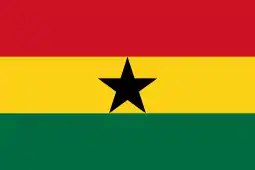 Ghana, passing through Tema. Most of Ghana, including the capital Accra, lies within the Western Hemisphere.
Ghana, passing through Tema. Most of Ghana, including the capital Accra, lies within the Western Hemisphere.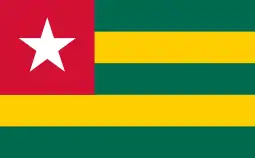 Togo, passing near Tami (Tône Prefecture in Savanes Region).
Togo, passing near Tami (Tône Prefecture in Savanes Region).
Below is a list of additional sovereign states which are in both the Western and Eastern Hemispheres along the 180th meridian, in order from north to south. (France is not listed below due to its inclusion above, though the meridian does pass Wallis and Futuna.) With the exception of the United States (due to Wake Island, Guam and the Northern Mariana Islands), all of them are located on just one side of the International Date Line, which curves around them.
 Russia, passing through Chukotka Autonomous Okrug. Its portion lying east of the 180th meridian is the only part of the country lying in the Western Hemisphere.
Russia, passing through Chukotka Autonomous Okrug. Its portion lying east of the 180th meridian is the only part of the country lying in the Western Hemisphere. United States, passing through the Aleutian Islands (Alaska). Except for the portion of Aleutian Islands and waters lying west of the 180th meridian, Guam, the Northern Mariana Islands, and Wake Island, most of the country lies east of the 180th meridian.
United States, passing through the Aleutian Islands (Alaska). Except for the portion of Aleutian Islands and waters lying west of the 180th meridian, Guam, the Northern Mariana Islands, and Wake Island, most of the country lies east of the 180th meridian.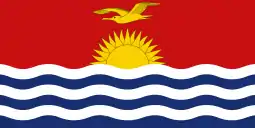 Kiribati, passing close to Arorae. The country has both the Equator and the 180th meridian (antimeridian) crossing through its territory.
Kiribati, passing close to Arorae. The country has both the Equator and the 180th meridian (antimeridian) crossing through its territory.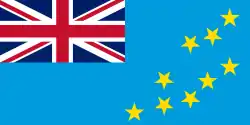 Tuvalu, passing close to its capital, Funafuti.
Tuvalu, passing close to its capital, Funafuti. Fiji, passing close to its dependency Rotuma and passing through Taveuni.
Fiji, passing close to its dependency Rotuma and passing through Taveuni.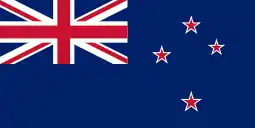 New Zealand, passing close to the Kermadec Islands, the Chatham Islands, the Bounty Islands and the Antipodes Islands. Most of New Zealand proper lies within the Eastern Hemisphere; only its Chatham Islands and Kermadec Islands, as well as the self-governing states of the Cook Islands and Niue and the dependent territory of Tokelau, lie east of the 180th meridian.
New Zealand, passing close to the Kermadec Islands, the Chatham Islands, the Bounty Islands and the Antipodes Islands. Most of New Zealand proper lies within the Eastern Hemisphere; only its Chatham Islands and Kermadec Islands, as well as the self-governing states of the Cook Islands and Niue and the dependent territory of Tokelau, lie east of the 180th meridian.
One sovereign state has territory in both hemispheres, but neither the prime meridian nor the 180th meridian passes through its territory:
 Netherlands, the islands of the Dutch Caribbean lie entirely within the Western Hemisphere while the European Netherlands lies entirely within the Eastern Hemisphere.
Netherlands, the islands of the Dutch Caribbean lie entirely within the Western Hemisphere while the European Netherlands lies entirely within the Eastern Hemisphere.
Countries, dependencies and other territories in the Western Hemisphere but not in the Americas
The following countries and territories lie outside the Americas yet are entirely, mostly or partially within the Western Hemisphere:
References
- Olson, Judy M (1997), "Projecting the hemisphere", in Robinson, Arthur H; Snyder, John P (eds.), Matching the map projection to the need, Bethesda, MD: Cartography and Geographic Information Society, American Congress on Surveying and Mapping.
- "Western Hemisphere", Merriam-Webster's Geographical Dictionary (3rd ed.), Springfield, Massachusetts: Merriam-Webster, 2001, p. 1294. - Oxford Dictionary of English (2nd ed.), London, UK: Oxford University Press, 2006, p. 2001
- "Western /western%20hemisphere", Merriam Webster's Online Dictionary (based on Collegiate vol., 11th ed.), Springfield, MA: Merriam-Webster, 2006 - "Western Hemisphere," Encyclopedia Britannica (2018-11-29) [accessed 2021-02-05].
- Bureau of Western Hemisphere Affairs, United States Department of State.
- Western Hemisphere, United States Department of the Treasury.
- Western Hemisphere, Office of the United States Trade Representative.
- Joe Biden: The Western Hemisphere Needs U.S. Leadership, Americas Quarterly, 17 December 2018.
- Western Hemisphere, United States Department of Justice.
- Western Hemisphere, United States Department of Agriculture.
- Western Hemisphere, United States Fish and Wildlife Service.
- Western Hemisphere, Fulbright Program.
- "Informe científico que estudia el Aconcagua, el Coloso de América mide 6960,8 metros" [Scientific Report on Aconcagua, the Colossus of America measures 6960,8m] (in Spanish). Universidad Nacional de Cuyo. 2012. Archived from the original on September 8, 2012. Retrieved September 3, 2012.
External links
 Media related to Western Hemisphere at Wikimedia Commons
Media related to Western Hemisphere at Wikimedia Commons